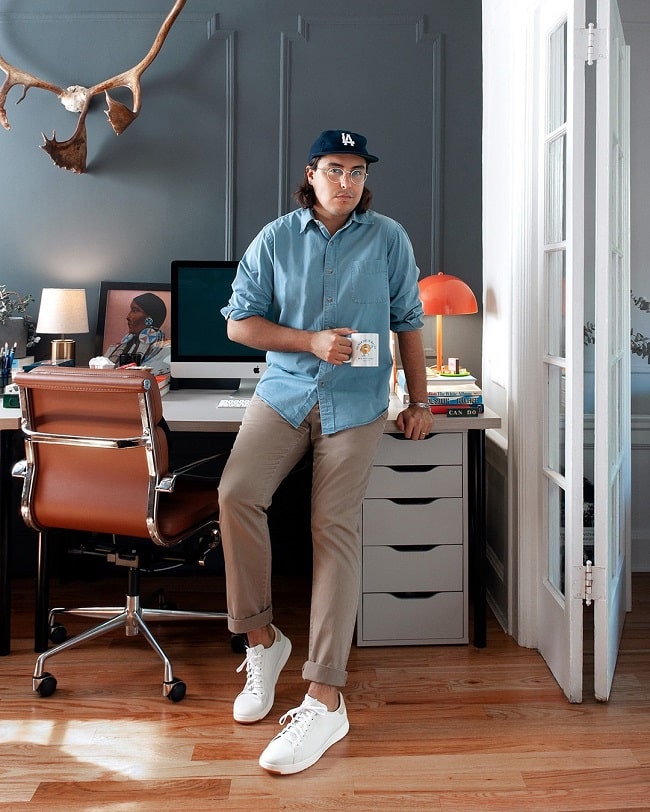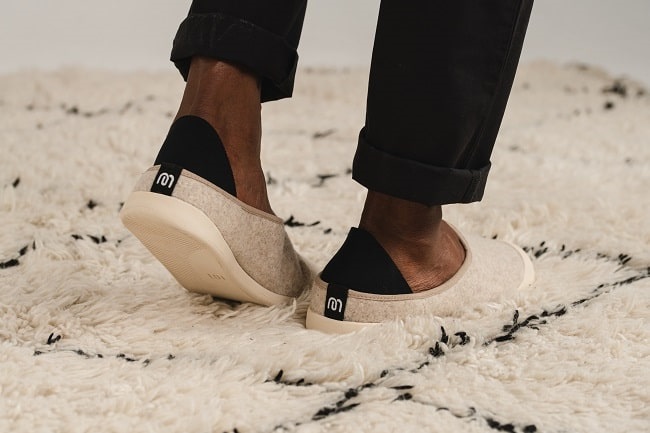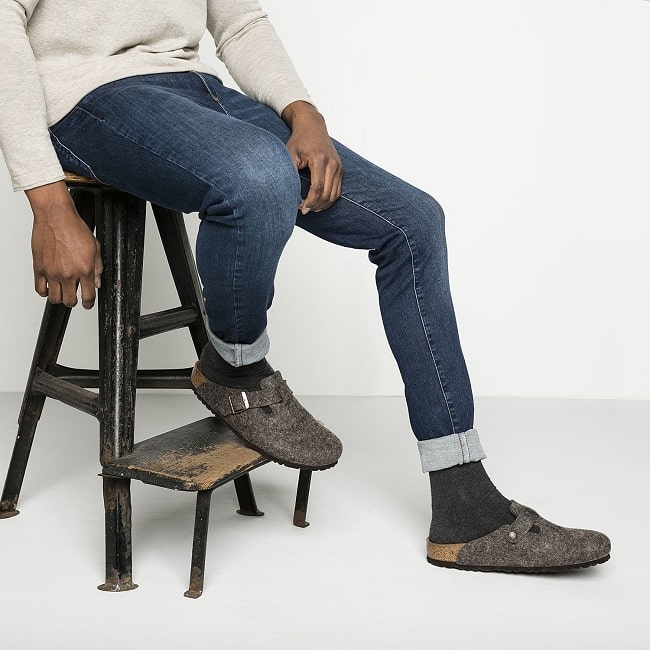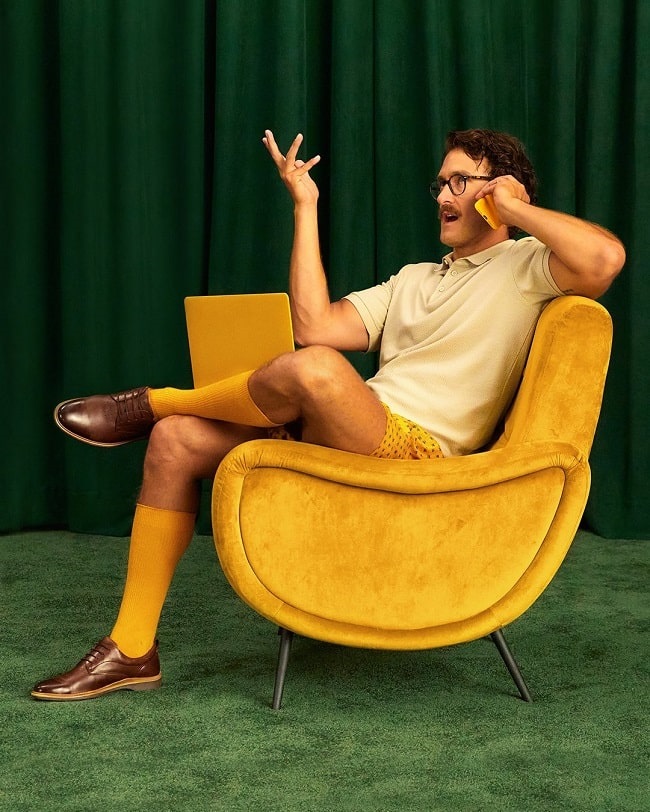1
HOME > Tips & Advice >
A GUIDE TO WEARING MEN'S HOUSE SHOES
Written by Ivan Yaskey in Tips & Advice on the 11th January 2021

Up to the pandemic, references to house shoes always came off a bit pretentious. The phrase could simply be an elevated way of talking about slippers, or it implied a degree of extreme fastidiousness, as if to say, “Regular shoes don’t belong in the home.” With many of us working and doing just about everything from home now, house shoes have taken on new meaning, often indicating a pair of slip-ons or lighter-weight trainers you wear for traction, support, and normalcy. If you’re wondering why house shoes are having their moment, read on.
The Rise of the House Shoes
You’ll find countless articles about no-shoes households, crossing lifestyle and fashion websites to parenting blogs. Regardless of what you’re reading and where the information’s from, one theme emerges: street shoes track in dirt and germs, ultimately smearing it all over the floors and getting it embedded in the carpet. From a practical standpoint, a no-shoes household translates to less vacuuming and mopping. If you’re concerned about what shoes could’ve picked up out on the street, this idea keeps whatever it is at the door – or, in some cases, on a rack outside. So, if a household has gone no-shoes, what then? You simply wear socks, walk around in your bare feet, or slip on a set of slippers.

If you spent most of your day outside of the home, this was no big deal. The last few hours after returning from the daily grind feel made for relaxation, anyway. Yet, working from home has brought up a few issues with not ever wearing shoes. For one, your toes occasionally need protection, and two, traction isn’t a luxury. Socks and slippers have you sliding, bare feet risk splinters and stubbed toes, and, long term, your feet no longer get the orthotic support they used to have. Enter the house shoe. For some, this has looked like a pair of Crocs, which deliver to some degree in all three areas. Yet, especially with work and casual wardrobes merging into a work-from-home hybrid, footwear has found itself in a similar position. Slippers and similar indoors shoes don’t have the support and traction you need, yet you’re not looking to go about your day in lace-up dress shoes, like you’re headed into the office.

What is a House Shoe?
To start, house shoes have no clear definition. Oftentimes, they’re used interchangeably with slippers, and in others, they’re a more western word for an East and Southeast Asian practice. In the more modern sense, “house shoe” pertains to a low-maintenance, not-flimsy pair you slip on to get things done around the home. First and foremost, comfort’s a major factor: these aren’t shoes you intend to break in over time. You might slip them on to do some cooking or chores or to get your 9-to-5 done from the home office. At the same time, comfort doesn’t imply a puffy or plush texture. Rather, it’s indicative of the space and support your house shoes provide. They’re a few levels up from a traditional slipper, but you wouldn’t put them on to go running outdoors – or even work out in the living room. On another note, they shouldn’t appear too jarring with your work-from-home wear, but they look a step down from something you’d put on for the business-casual office – although it might not be off the mark with smart-casual dress codes. Then, more on the practical end, house shoes should provide some traction, especially for moving around the kitchen or making repairs, but you don’t need the heavily lugged outsole of, say, a work boot. To that extent, because you’ll be exclusively wearing them indoors, they shouldn’t be something that requires cleaning: whatever you choose shouldn’t leave scuffs on the floor and walls that you’ve got to mop or scrub later.

Strive for a Slip-On
A proper house shoe, these days, is a slip-on. As a baseline, look for a clog: unlike a slipper, a clog is designed with a thicker, more substantial sole. Built for everyday wear, the outsole will likely be textured to some degree, giving you the freedom to not worry about slipping whenever you’re cooking, getting work done, or moving up the stairs. As the “entry-level" house shoe, clogs are easy and straightforward: they don’t have a back, and all you have to do is slide them on. On one hand, clogs cover a span of design possibilities: outside of those Crocs collabs, you’ll spot various colours, patterns, and materials, from classic leather or even suede if you prefer some luxury. Then, there’s fabric for a more lightweight fit. If you love the feeling of fuzzy slippers, linings add that degree of comfort you seek. Still, a clog can feel a bit like a slipper, and can make it seem like you haven’t fully gotten ready for the day. If you’re seeking out a proper shoe you plan to wear around the house, a classic men’s slip-on will do the trick, be it a loafer or a driver’s shoe. Beyond the traction and slip-on factor, a back keeps your foot in place, letting you get around the house with a greater degree of ease. Plus, it feels like you’re actually going somewhere. This clever design from Mahabis features a neoprene heel cradle to make your feet feel supported, for example.

Lightweight Canvas
We’ve discussed the benefits of lightweight canvas and support them for wear strictly at home. Whether you select a classic skate shoe, like a Vans slip-on, or don’t mind a quick lace-up, like what you get with a pair of Converse low-tops, the material’s lack of heft gives it an easygoing sensation. Plus, if you’re the type to only wear canvas shoes in summer, relegating your pair to winter year-round wear in the house extends their lifespan and will likely keep them looking crisp.
What to Avoid
Because house shoes aren’t simply for covering your soles and toes, you want a style that provides enough orthotic support – something you don’t get from walking around in bare feet all day. As a few studies have shown, a lack of support doesn’t just translate to fatigue: it can affect your posture and, when you’re physically active, increase physical injury risks. On that note, while it might be tempting to slide on a pair of flip-flops or slides, avoid doing so, as not only are your toes not protected, but your feet aren’t getting the support they need. Instead, look for a slip-on constructed with memory foam for greater impact absorption and a sturdier, less-flexible base.

Do you wear any type of footwear around the house? #style #wfh
— Menswear Style (@MenswearStyle) January 11, 2021

Trending
2
3
4
5
6
7
8
9
10










